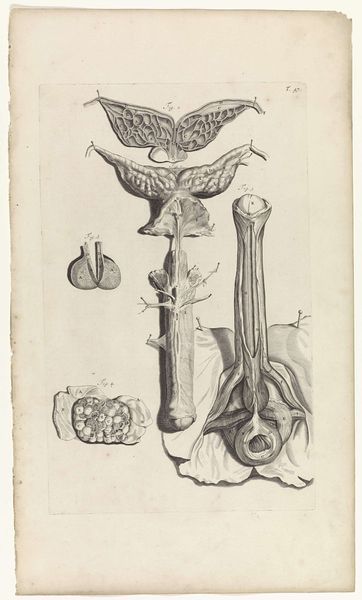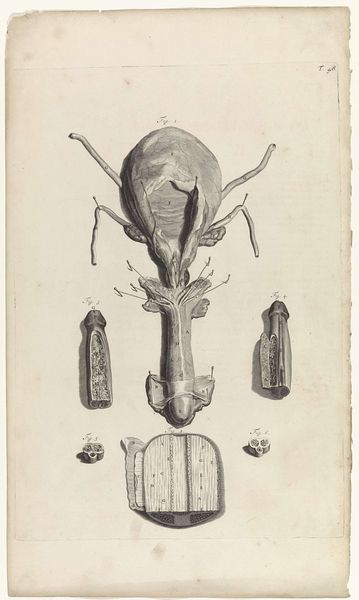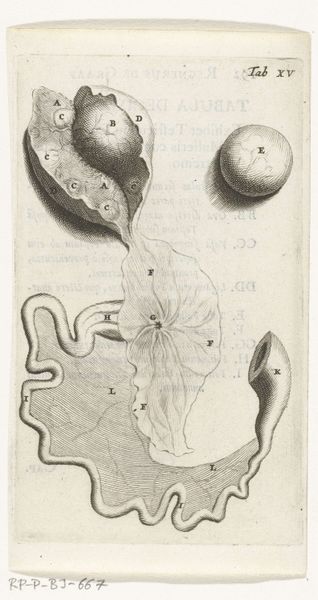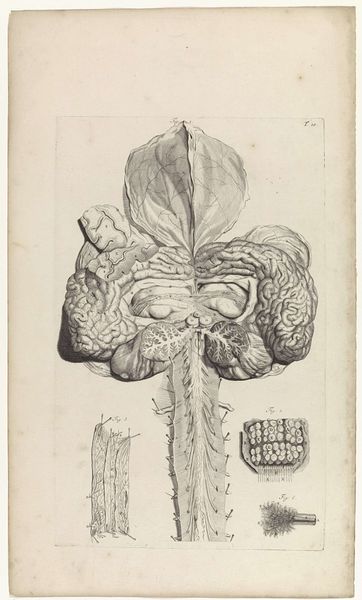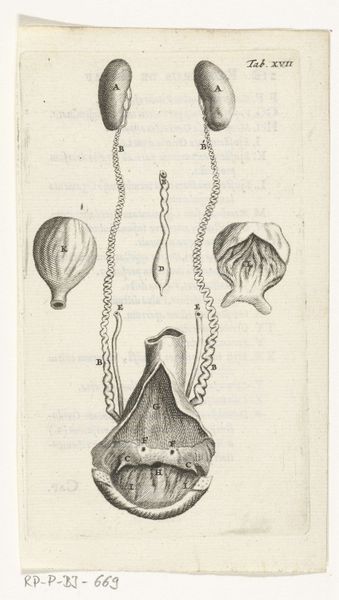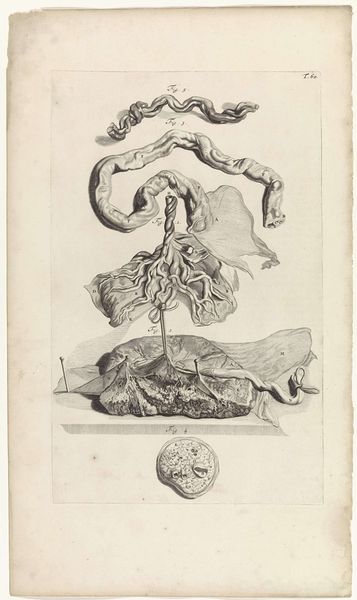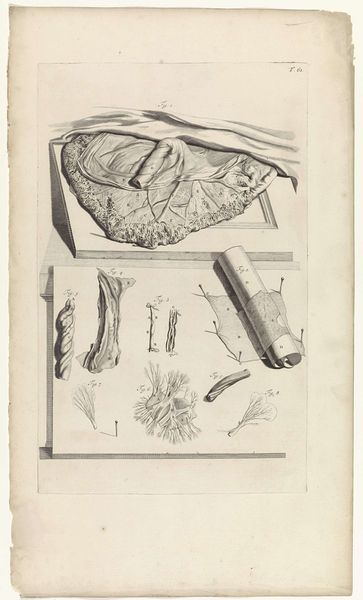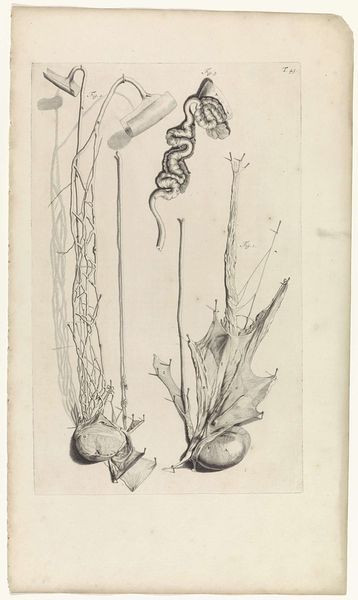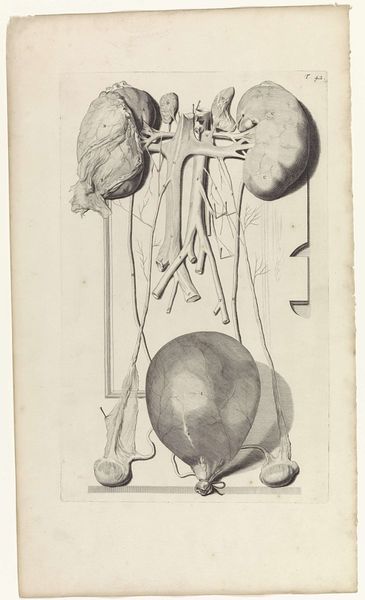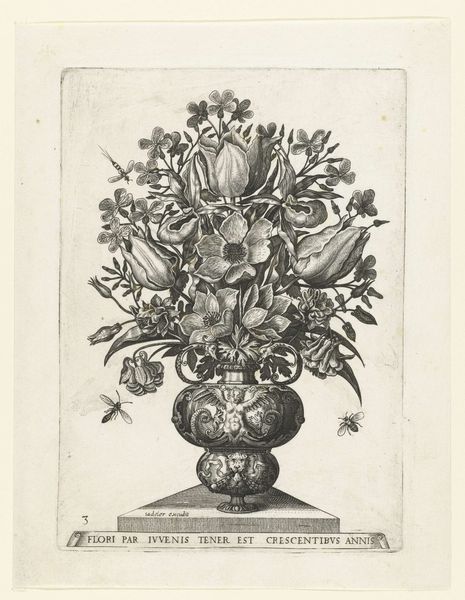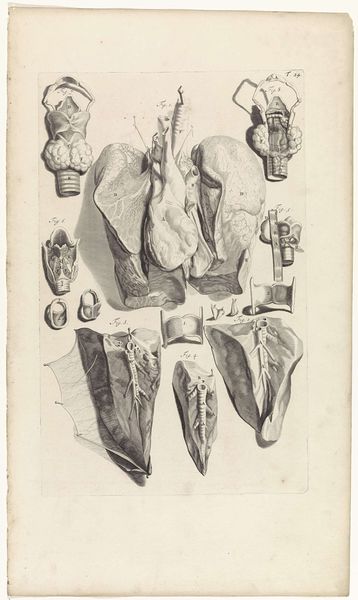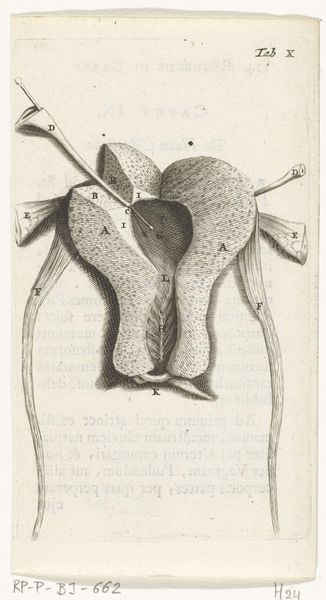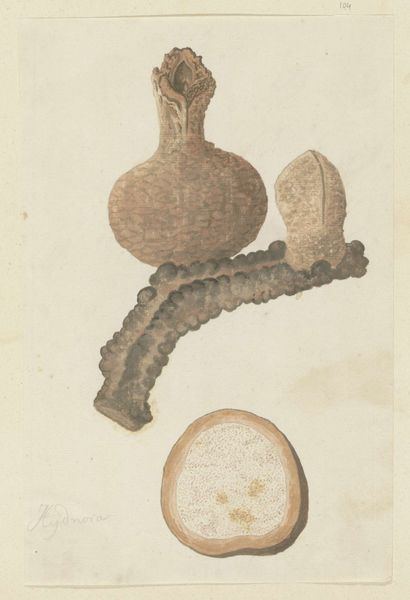
drawing, ink, pen
#
drawing
#
baroque
#
pen sketch
#
pencil sketch
#
ink
#
pen-ink sketch
#
pen
#
history-painting
#
academic-art
#
realism
Dimensions: width 278 mm, height 443 mm
Copyright: Rijks Museum: Open Domain
Pieter van Gunst made this print of the male reproductive system in the Netherlands, sometime between 1659 and 1724. The image represents the shift towards empirical observation and scientific discovery that characterized the era. But what institutions made this kind of knowledge possible? In the 17th and 18th centuries, anatomical studies like this were crucial to the development of medical knowledge and the training of surgeons. At the time, the guilds regulated artistic professions, while medical guilds oversaw the training of doctors and surgeons. Prints like this one served as educational tools. The anatomical theaters and the universities played a central role in disseminating knowledge. The production of such detailed prints also relied on the skills of trained artists, and the patronage of wealthy individuals and institutions. To understand the social context of this print, one might research the history of medical education, the role of guilds and artistic patronage, and the cultural attitudes towards science and the human body in the Dutch Republic.
Comments
No comments
Be the first to comment and join the conversation on the ultimate creative platform.
